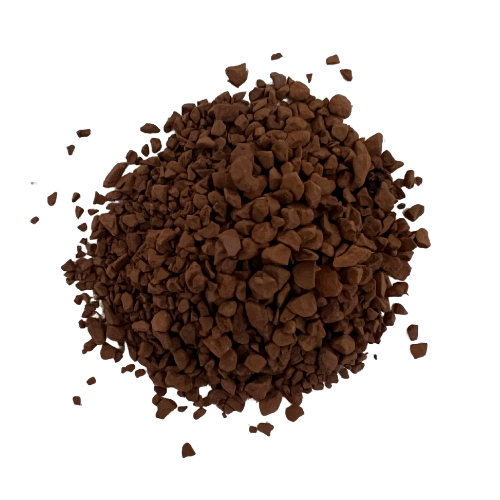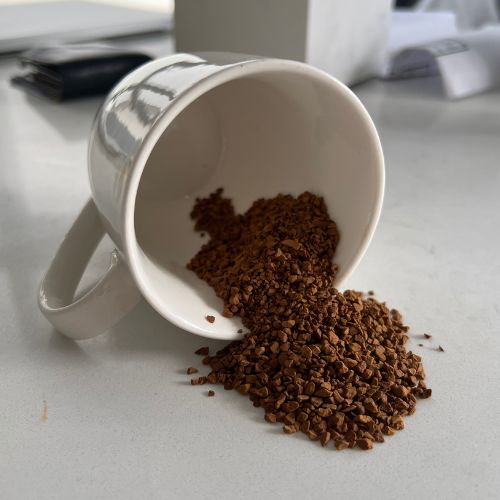There has been a quantum shift in weight-loss supplements over the years, and one term trending hard right now is “thermogenic.” In years past, appetite suppression was the name of the game, but as consumers have become more health conscious, the idea of burning calories came more into vogue. In this article, I’ll cover the basics of thermogenesis, what it looks like naturally, and whether supplements can really help.
What you need to know
Science Behind Thermogenics
Thermogenics, or thermogenesis, refers to the body producing heat as a by-product of burning calories in the process of either
A) digesting food, or
B) trying to stay warm.
There are a few products and ingredients on the market that promise to help you lose weight through “thermogenics,” but unless the ingredients are helping to either digest food, or keep you warm, then they aren’t using thermogenics at all; they’re using a trendy word to sell supplements.
One of the key factors in thermogenesis is the involvement of the sympathetic nervous system (SNS). The SNS works automatically, and is triggered by the release of hormones or other biosignalers in our system. One classic example is caffeine: when we take caffeine, the stimulant sends signals throughout our bodies to widen blood vessels, ramp up the heart rate, and execute skeleto-muscular commands more quickly.
When we eat while these signals are all going faster, our SNS tells our body to burn calories instead of storing them, thus increasing our metabolism.


But we need to be aware that the body seeks balance. So while caffeine makes most of our blood vessels larger, it actually constricts the blood vessels in our heads and necks as a safety precaution. It is this very mechanism that is responsible for crash dieters gaining all their weight back; when a person over-fasts, they do start to burn fat reserves around the body. But later the nervous system, triggered by hormones released upon the ingestion of food, begins to store every calorie a person eats as fat for later.
Back to thermogenesis. Some food and supplement ingredients do increase the SNS response, and generate more “heat” upon ingestion. This in turn can lead to more calories burned during rest. But the supplements themselves don’t burn fat–they can only help your body burn fat if it was going to already.
Brown Adipose Tissue
Before we go further, we need to talk about fat–specifically, Brown Adipose Tissue, or BAT. When we are cold, our bodies need to keep warm, obviously. One we do that is through the SNS triggering our body to burn stored fat. The mechanism is through BAT.
When we burn fat to stay warm, it isn’t our BAT that burns, but rather, our BAT turns other fat into beige fat, which it then burns to keep the body warm. To highlight how BAT actually keeps us healthy, athletes have more BAT than obese people. I bring up BAT now because we’ll discuss below some ingredients in supplements that actually trigger our BAT to burn fat even when we’re not cold.
Which Ingredients Actually Work?
I’ll only focus on what works in this article. While my research is always ongoing, this is a pretty inclusive list of supplement ingredients that really are thermogenic. If you find an ingredient that claims to be thermogenic, and it’s not on my list, it probably isn’t. I’m always happy to perform research on request though, so if you’re not sure, drop a comment below and I’ll look into it!
Caffeine
Probably the most famous “thermogenic” fat burner of them all, I’m happy to report it really does raise diet-induced thermogenesis, or DIT. DIT can be achieved with supplement caffeine, a cup of coffee, or green tea extracts. No matter how you slice it, caffeine is a proven thermogenic ingredient that can raise your metabolism.
What’s more, a recent study found that caffeine increases calorie burn at almost any effort level. The downside is that this is partially because it deters maximum muscle efficiency. That upside is you really will burn more calories.

Capsaicin
Another very popular supplement ingredient, capsaicin is the chemical in chilis that makes them spicy. It has long been reported that populations with high capsaicin intake have lower obesity. For many years this was largely attributed to the fact that spicy foods, or those high in capsaicin, can reduce appetite: eating less, researchers thought, was why they were less obese.
But recent data has shown that capsaicin can actually trigger the BAT mechanism in our bodies to burn fat–without making us cold, of course. One study found that as few as two weeks of capsaicin supplementation can increase BAT action by over 48%.
Further studies have shown that only 2.56 mg of capsaicin with meals can increase passive fat burning, and meta-analysis of all studies supported almost complete success rates for capsaicin fat-burning–all via actual thermogenesis.
Resveratrol
I know what you’re thinking. “I never saw that word on a supplement label.” Well, if you’ve looked into nootropics, you might have, but probably not on a fat-burner label. Resveratrol is a naturally occurring compound found in grapes, berries, cocoa, and peanuts (among other things). If your fat burner has “cacao,” acai berries, blueberry extract, or anything of that type, the odds are that it’s actually using only the resveratrol from that food.
And, it turns out, for good reason. Not only does resveratrol help the body burn sugar, instead of storing it as fat, but it also does boost thermogenesis. In fact, the thermogenic abilities of resveratrol improve so well over time they even affect the genetics involved with fat burning.
Curcumin
Often known by its kitchen and household name, the herb cumin has amazing fat-burning potential. While less studied and used as a supplement additive, some limited research has indicated that curcumin does burn fat but requires activation through certain gut microorganisms. Other, much more recent research, however, has indicated that curcumin can help BAT “brown” other white fat tissue in overfed lab animals.
Odds and Ends

There are several other supplement ingredients that I’ll mention with a little less scientific consensus on their thermogenic qualities, that nonetheless show promise.
One ingredient, used in Trimtone, was grains of paradise. A team of researchers in Japan noted that long-term ingestion of these grains may re-stimulate a healthier BAT response in people who have lost the ability to burn fat through thermogenesis.
Another ingredient, popular in current supplements, is the amino acid L-Arginine, which a brand-new study showed may also increase BAT response.
Conclusion
I know that many people want a simple “yes” or “no” answer, but science and medical research often tends more toward the “it depends” answer. When it comes to thermogenics, it’s nearly impossible to say that Supplement A will definitely induce thermogenesis because everyone’s body chemistry is so different.
Finding a rigorous study of any commercial supplement is difficult. But we can look at several studies of ingredients commonly used in commercial supplements. From there, a wise consumer should make sure to look for these ingredients in supplements from reputable manufacturers. Because there are indeed many thermogenic substances that can help your body burn through fat. Whether these ingredients are properly sourced and folded into a quality supplement, though, is up to the individual supplement maker.
